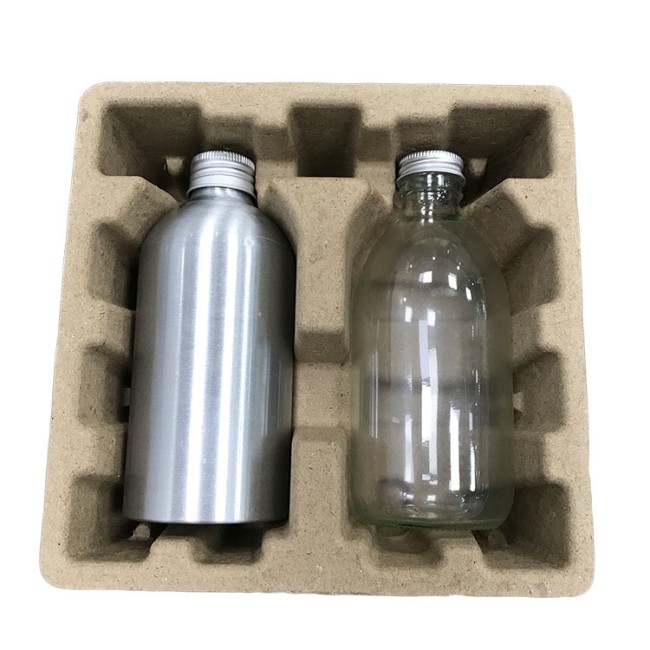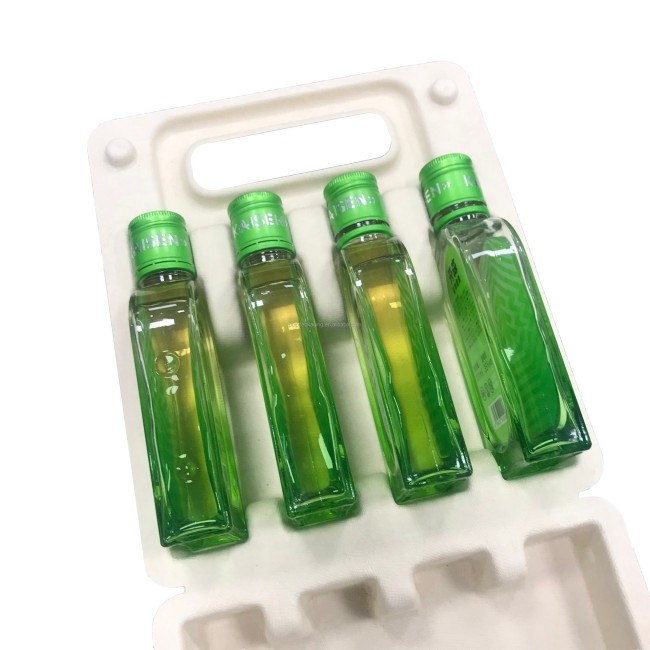In today's society, awareness of environmental issues is increasing, leading to a growing demand for sustainable packaging solutions among both businesses and consumers. In this context, eco-friendly pulp trays have emerged as a green choice that not only excels in environmental benefits but also plays a crucial role in product protection. This article will explore, from multiple professional perspectives, how eco-friendly pulp trays effectively safeguard products, ensuring their safety during transportation and storage.
1. Scientifically Designed Buffering Performance
The buffering performance of eco-friendly pulp trays primarily stems from their unique material properties and structural design. Molded pulp is manufactured through specific processes that create a cushioning layer with excellent elasticity. This layer can absorb and disperse the force during external impacts. For instance, when a product is subjected to bumps or shocks during transportation, the structure of the pulp tray effectively mitigates the impact on the product, significantly reducing the risk of damage. This buffering design is particularly crucial for fragile items such as electronic devices and ceramics, helping to lower return rates and customer complaints while increasing customer satisfaction and loyalty.
2. Enhanced Compression Resistance
Eco-friendly pulp trays not only excel in buffering performance but also undergo scientific testing and optimization to enhance their compression resistance. This ensures that they can effectively support products of various weights and shapes in practical applications. Such designs allow the trays to maintain their integrity during stacking and transportation, preventing deformation or breakage over extended periods. For heavy equipment or high-end goods that require long-distance transport, the compression resistance of the pulp trays provides additional assurance, ensuring product safety throughout the logistics chain. Compared to traditional foam or plastic packaging, eco-friendly pulp trays offer better resilience in high-pressure environments, providing reliable protection for valuable items.

3. Moisture-Resistant Treatment Technologies
Moisture control is critical for preserving the quality of many products, especially in the food and pharmaceutical industries. Modern eco-friendly pulp trays often undergo specific moisture-resistant treatments, allowing them to effectively block moisture from the air and reduce the risk of products becoming damp. Research indicates that humid environments can lead to food spoilage, drug inefficacy, and even damage to electronic devices. By using moisture-resistant eco-friendly pulp trays, companies can significantly extend the shelf life of their products, ensuring freshness and safety during storage and transport. This treatment not only enhances the functionality of the packaging but also supports companies' competitive positioning in the market, as consumers tend to favor products that offer greater safety guarantees.

4. Advantages of Customization
One of the notable advantages of pulp trays is their high degree of customization. Companies can design trays tailored to the specific shapes, sizes, and weights of their products, ensuring a perfect fit. This customization not only improves protective efficacy but also enhances the aesthetic appeal and practicality of the packaging. By designing trays for specific products, businesses can effectively prevent movement or collisions during transportation, thereby minimizing friction and damage. Moreover, customized pulp trays can also help brands attract consumers visually, increasing brand recognition. In a competitive market, this differentiation strategy can help businesses stand out among similar products.

5. Environmental Benefits that Enhance Brand Value
Utilizing eco-friendly pulp trays is not only a demonstration of corporate responsibility but also an opportunity to enhance brand image. As consumers become increasingly concerned about sustainable products, green packaging has become an essential factor in product selection for many customers. By adopting eco-friendly pulp trays, businesses can showcase their commitment to environmental protection, attracting environmentally-conscious customers. This strategy not only enhances the market image of the brand but also helps build emotional connections with consumers, increasing customer loyalty. In this market environment, green packaging represents not only a contribution to society but also a vital factor for achieving commercial success.
6. Optimized Economic Benefits
From an economic standpoint, eco-friendly pulp trays can bring significant cost advantages to businesses throughout the production and transportation processes. First, the raw materials for pulp trays are often renewable, meaning companies can reduce production costs while remaining environmentally friendly. Additionally, the lightweight design of pulp trays helps to decrease transportation costs and improve logistics efficiency. By optimizing the transportation process, companies can lower logistics expenses while minimizing additional costs associated with packaging materials during transit. Overall, eco-friendly pulp trays ensure product safety while providing a safeguard for businesses' economic performance.
Eco-friendly pulp trays exhibit multiple advantages in product protection, including superior buffering performance, enhanced compression resistance, moisture resistance, customization capabilities, brand image enhancement, and optimized economic benefits. As the concept of sustainable development becomes increasingly prevalent, eco-friendly pulp trays serve not only as a guarantee for product safety but also as a reflection of a company's competitiveness and market value. Businesses that choose eco-friendly pulp trays are seizing the opportunity presented by current trends, laying a solid foundation for future success.

